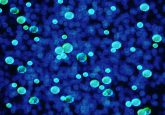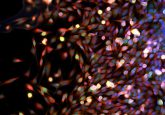Study shows potential of combination therapy in treating Ewing sarcoma
Ewing sarcoma (EWS) tumors treated with a combination therapy that included experimental breast cancer agents were found to disappear in >70% of mice in a recent study. The research was a conducted by investigators at St Jude Children’s Research Hospital (TN, USA) and will appear this week in Cell Reports.
The treatment consisted of two chemotherapy drugs currently used in the treatment of EWS with experimental PARP inhibitors. PARP inhibitors interfere with DNA repair and are currently in use in clinical trials for certain breast and ovarian tumors, as well as other solid tumor types.
EWS is a cancer of the bone and soft tissues and is most prevalent in adolescents and young adults. Diagnosed in 250 US residents per year, it is the second most common bone tumor in this demographic. Long-term survival currently stands at approximately 75–80%, provided that the cancer has not spread to other areas of the body. However, the survival rate for EWS patients with metastatic disease is very poor.
“During the past 20 years there has been no significant improvement in the cure rate for Ewing sarcoma, and survival is just 15-20% for patients whose disease has spread or comes back after treatment,” commented co-author Michael Dyer, Howard Hughes Medical Institute (MD, USA) investigator and a member of the St Jude Department of Developmental Neurobiology.
The St Jude researchers demonstrated that EWS cells are defective in DNA damage repair and using cells cultured in mice and the lab further demonstrated that this defect could be exploited utilizing chemotherapy and a PARP inhibitor in tandem.
Their experiments in mice were designed to mirror the human Phase I, II and III studies that gauge the safety and effectiveness of experimental therapies. The studies demonstrated that PARP inhibitors and the chemotherapy drugs irinotecan (IRN) and temozolomide (TMZ) interact synergistically to kill EWS cells. The Phase III trial was a double-blind, placebo controlled, randomized study that included 274 mice in 15 separate treatment groups, each utilizing different dosage combinations of IRN and TMZ plus three PARP inhibitors currently in development for pediatric cancer treatment.
Treatment with IRN, TMZ and PARP inhibitor olaparib caused EWS to disappear in 71% of mice, and the EWS had not returned after four months. These results were further improved when IRN and TMZ were paired with the PARP inhibitor talazoparib. This combination resulted in complete remission in 88% of 16 mice treated.
“Our preclinical results suggest Ewing sarcoma is particularly sensitive to this combination therapy, a possible indication that the tumors DNA repair defect provides us with a much needed advantage to knock out tumor cells,” said author Anang Shelat (St Jude Children’s Research Hospital). “There is some evidence that this type of defect is present in other pediatric tumors, and we are actively investigating drug sensitivity in those cancers,” he continued.
A collaborative clinical trial involving St Jude Children’s Research Hospital and Dana-Farber/Harvard Cancer Center (MA, USA) is due to commence in late 2014 for adolescents and young adults whose tumors have either not disappeared after conventional treatment or have returned after therapy. The trial will utilize the drug combination outlined in this research: IRN and TMZ and olaparib.




